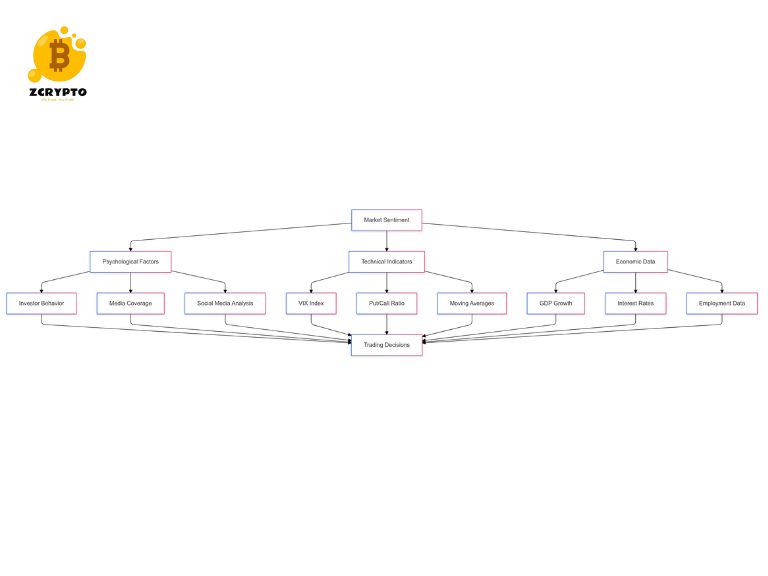- How Call Options Work: A Comprehensive Guide to Buying, Selling, and Profiting
- What is NFT Marketplace? – ZCrypto
- Understanding 60-Plus Delinquencies: Impact on Credit Scores and Financial Health
- Understanding American Options: Flexibility, Benefits, and Key Differences in Financial Markets
- Unmasking Boiler Room Scams: How to Protect Your Investments from High-Pressure Fraud
Market sentiment reflects the aggregated attitudes and emotional responses of investors and traders toward financial markets and specific assets. What is market sentiment? It represents the collective psychology driving market behavior, price movements, and trading volumes across financial instruments.
You are viewing: What is Market Sentiment? The Professional Guide to Market Psychology
Core Components of Market Sentiment
Market sentiment manifests through several interconnected components that shape financial market dynamics:
Behavioral Indicators Professional traders analyze crowd psychology through multiple behavioral signals. These include trading volumes, price momentum, and order flow patterns. High trading volumes often indicate strong conviction, while declining volumes might signal wavering confidence.
Technical Analysis Integration Market sentiment interacts with technical analysis through specific indicators:
- The VIX (Volatility Index) measures expected market volatility
- The Arms Index tracks trading volume relationships
- The Put-Call Ratio indicates options market positioning
Social and Media Analysis Financial markets respond to news coverage, social media discussions, and expert commentary. Professional analysts monitor:
- News sentiment through natural language processing
- Social media mention frequency and tone
- Expert commentary trends across financial platforms
Measurement Techniques
Professional traders employ sophisticated methods to quantify market sentiment:
See more : Understanding the 10-Year Treasury Note: A Key Benchmark for Investors and the Economy
Quantitative Indicators
- Bull/Bear Ratios track institutional investor positioning
- Short Interest Ratios measure bearish sentiment
- Fund Flow Analysis reveals institutional capital movement
Statistical Analysis Market sentiment measurement incorporates advanced statistical tools:
- Time series analysis of price movements
- Correlation studies between sentiment indicators
- Regression analysis of sentiment impact on returns
Machine Learning Applications Modern sentiment analysis leverages artificial intelligence:
- Natural Language Processing (NLP) for news analysis
- Pattern recognition in trading behavior
- Predictive modeling using sentiment data
Practical Application
Professional investors implement market sentiment analysis through structured approaches:
Risk Assessment Framework
- Position sizing based on sentiment extremes
- Stop-loss placement considering sentiment shifts
- Portfolio hedging during sentiment transitions
Trading Strategy Integration Market sentiment informs trading decisions through:
- Entry timing based on sentiment indicators
- Position management using sentiment shifts
- Exit strategies incorporating sentiment analysis
Portfolio Management Professional managers use sentiment analysis for:
- Asset allocation adjustments
- Sector rotation decisions
- Risk exposure management
Contrarian Opportunities Extreme sentiment readings often signal potential market reversals:
- Oversold conditions during peak pessimism
- Overbought situations amid excessive optimism
- Sentiment divergences from price action
Market Sentiment Impact Analysis
Short-term Effects
- Price volatility increases during sentiment shifts
- Trading volumes reflect sentiment intensity
- Market gaps occur with sudden sentiment changes
Medium-term Implications
- Trend persistence relates to sentiment strength
- Sector rotation follows sentiment shifts
- Options pricing reflects sentiment expectations
Institutional Responses Professional institutions adapt to sentiment changes through:
- Position size adjustments
- Hedging strategy modifications
- Risk exposure management

Professional Integration Methods
Data Analysis Professional traders integrate sentiment data through:
- Real-time sentiment monitoring
- Historical pattern analysis
- Correlation studies with price action
Risk Management Sentiment analysis enhances risk control via:
- Position sizing optimization
- Stop-loss placement
- Hedge ratio adjustments
Strategy Development Trading strategies incorporate sentiment through:
- Entry/exit timing refinement
- Position management rules
- Portfolio rebalancing triggers
What is market sentiment? This critical market force integrates psychological, technical, and fundamental factors affecting financial markets. Professional traders who master sentiment analysis gain valuable insights for strategic decision-making and risk management. Success in financial markets requires careful attention to sentiment indicators while maintaining disciplined trading practices and comprehensive risk management protocols.
Source: https://summacumlaude.site
Category: Blog







